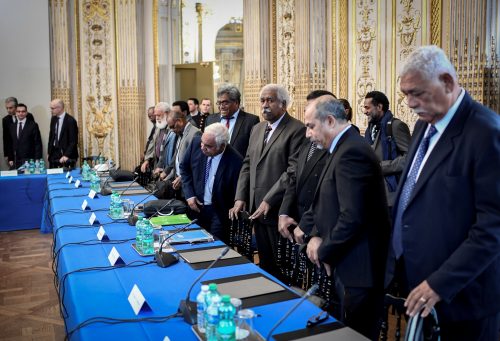Tides of change in the South Pacific

The tides of geopolitics are lapping on South Pacific shores. The region is seeing greater activity from both China and Russia and the independence vote in New Caledonia is fast approaching. These developments raise significant strategic questions and are worth exploring in greater detail.
Increasing Chinese activity across the region is well documented. Beijing has usurped the United States as the region’s second largest aid donor and is funding projects across the South Pacific. Fijian Prime Minister Frank Bainimarama has said that Fiji’s cooperation with China ‘reminds [Canberra] that countries like Fiji have options’.
Australia recently took over the laying of a telecommunications cable between Australia, the Solomon Islands and Papua New Guinea from Huawei due to the company’s alleged links to Beijing (Huawei has also been excluded from participating in Australia’s 5G mobile network).
In April, Australia warned Vanuatu against expanding military cooperation with China amid fears that Beijing was seeking permanent naval basing rights, although Vanuatu ‘angrily denied’ that it was in discussions with Beijing.
Russia is also becoming more active in the South Pacific. In December 2017, Royal Australian Air Force fighters scrambled to shadow two Russian bombers that flew over the Timor Sea from Indonesia’s Biak airfield. A Russian officer said that the mission aimed to ‘train pilots in navigating the Southern Hemisphere’ and ‘confirm the support logistics of Biak airfield’.
This suggests that the Kremlin sees potential for a sustained military presence in the region. The week prior, two Russian warships conducted an unofficial visit to Indonesia for joint drills. These deployments are building face-to-face ties that may help facilitate future negotiations on access rights.
Russian oligarch Oleg Deripaska, who is described by a US diplomatic cable as ‘one of the two to three oligarchs Putin turns to’, incidentally enjoys warm relations with officials in Jakarta. He once persuaded the Indonesian government to ban exports of bauxite and nickel ore to the detriment of local US mining operations.
Russia has also organised meetings in recent years with senior representatives of Vanuatu, Tonga, Papua New Guinea, Tuvalu, the Cook Islands, Samoa, the Marshall Islands, Micronesia, Nauru and Palau. It has made large aid donations to Tuvalu, Kiribati and Vanuatu and has sent at least 20 containers of military equipment to Fiji.
Increasing Chinese and Russian activity in the South Pacific is not, by itself, cause for alarm. Although Beijing is now the region’s second largest aid donor on paper, this figure is a measure of commitment rather than delivery, the latter remaining significantly lower. And Russia may be stepping up its military and economic ties with the Pacific, but its regional power projection capabilities remain hampered by sheer physical distance.
Still, the pattern of evidence shows that Beijing and Moscow are stepping up their activity in the South Pacific with unclear objectives. This comes ahead of a third development that is set to shape South Pacific geopolitics in coming months: New Caledonia’s referendum on independence in November.
The New Caledonian question raises interesting possibilities for regional geopolitical trends. The French territory is the hub of Paris’ regional economic and military power. It is home to a quarter of the world’s nickel reserves and provides 1.7 of France’s 11 million square kilometres of exclusive economic zone. The New Caledonian Armed Forces number just short of 2000 personnel and are a subdivision of the French military. Paris uses the New Caledonian Armed Forces for humanitarian aid and disaster response missions across the Pacific.
These resources are the foundation of French President Emmanuel Macron’s case for a new strategic axisbetween France, India and Australia to offset China’s (and Russia’s) growing regional clout. That case would likely be significantly undermined if New Caledonia votes for independence, although the extent of the damage would depend on how well-engaged France remains post-independence.
France’s retention of military bases across former colonies in North Africa suggests that it may seek to preserve a similar military presence in New Caledonia post-independence. But it is difficult to imagine that such a presence would match or surpass existing capabilities. A vote for independence may also expose New Caledonia to Chinese ‘debt-book diplomacy’, although France would still have the option of continuing existing financial subsidy arrangements to offset that risk.
Conversely, a vote against independence would strengthen Macron’s case to bring Canberra, Paris and New Delhi into strategic alignment for three reasons. First, it would lend some certainty to the future ability of French forces to participate in regional exercises like Pitch Black and Croix du Sud.
Second, France would retain stewardship of New Caledonia’s resource-rich exclusive economic zone. And third, it would reinforce France’s diplomatic efforts to ‘normalise’ its Pacific presence through New Caledonia and French Polynesia’s membership of the Pacific Islands Forum.
Either outcome in November will serve as a marker for the regional strategic tide. In any case, New Caledonians will need to navigate a divisive referendum only to potentially vote twice more in coming years. That may prove the greatest challenge of all.
This article was published by the East Asia Forum.
Ewen Levick is the Online Editor of the Australian Defence Magazine Group. His research examines Australia’s defence policy and capabilities, hybrid warfare, and strategic developments in the Asia-Pacific and the Arctic.














